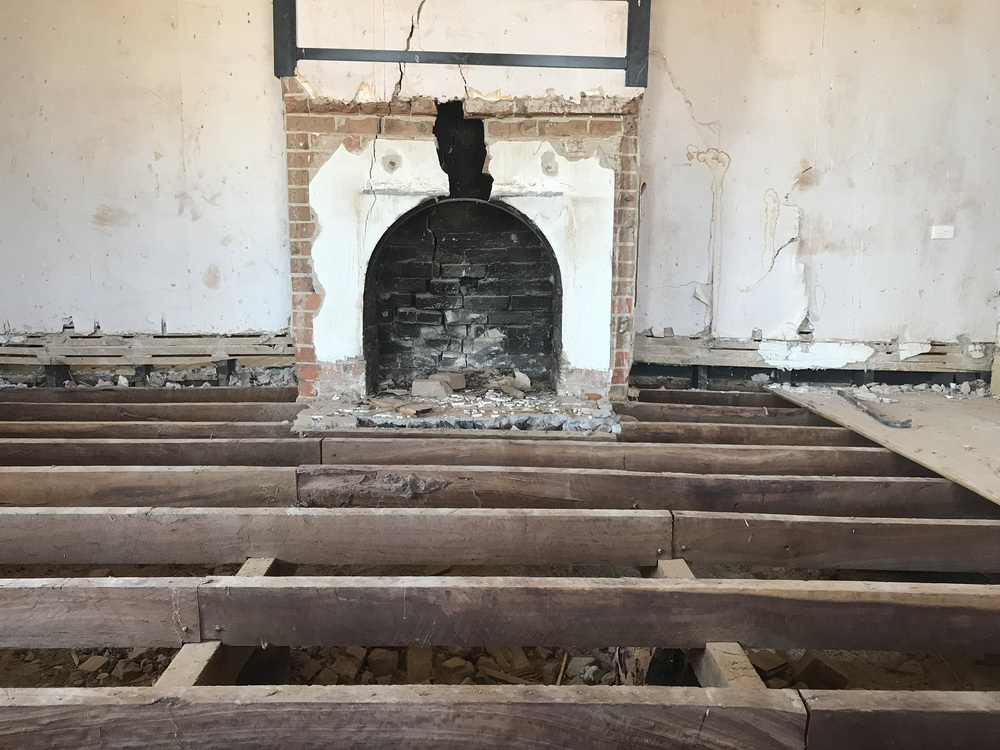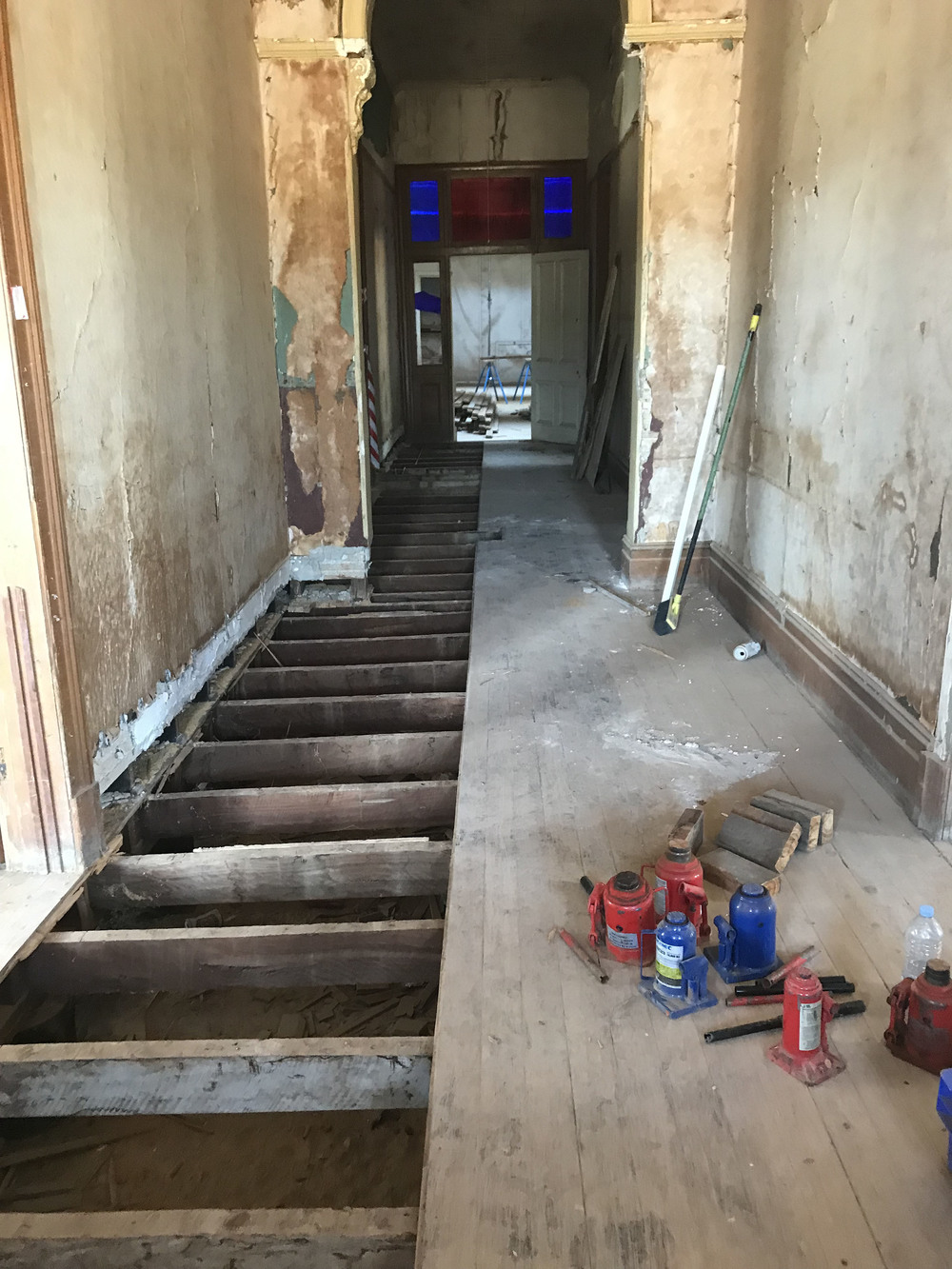Restoration underway at historical Bourke attraction
Oliver Brown
27 April 2022, 7:35 AM
 NPW Field Supervisor Andrew Heighway standing in front of the historic Toorale Homestead which is currently undergoing major restoration works in an effort to preserve it well into the future. Image courtesy of Andrew Heighway, NPWS.
NPW Field Supervisor Andrew Heighway standing in front of the historic Toorale Homestead which is currently undergoing major restoration works in an effort to preserve it well into the future. Image courtesy of Andrew Heighway, NPWS.ONE of the Bourke area's oldest historical buildings is currently undergoing significant restoration works to preserve it as key piece of local history and culture.
The Toorale Homestead is located on a 91,000 hectare piece of land traditionally owned by the Kurnu-Baakandji People - just over 50km south west of Bourke and 130km north of Cobar - which was purchased by the NSW and federal governments in 2008 for just under $24 million and turned into a national park and state conservation area.
Originally built in 1896 as a 24-room homestead, complete with multiple bedrooms, dining rooms and an internal courtyard, the property was once part of the largest sheep station in the world.
"It was said to be a wedding present for Sir Samuel McCaughey’s niece Louisa on her marriage to Matthew Robinson, who took over as Manager of Toorale in 1897," a spokesperson for the NSW National Parks and Wildlife Service (NPWS) said.
"It was the largest and best-known surviving historic homestead of the iconic Darling River properties."
The junction of the Warrego River and the Darling River is located on the Toorale property which was claimed to be the primary motivator for the governments purchasing it.
At the time, then Minister for Climate Change and Water Senator Penny Wong said Toorale held entitlements to extract 14 billion litres of water from the Warrego and Darling Rivers each year, along with rights to harvest water from the floodplain, supposedly allowing an average of 20 gigalitres of water to return to the Darling each year.
According to NPWS, the homestead has undergone renovation works in the past, including 1936 by the then managers and after the government took ownership of it.
"In 2013, NPWS undertook Roof and structural works to stop water penetration," the spokesperson said.
"(From this year) extensive works to repair and replace foundations are underway starting with floor re-levelling, roof framing repairs, chimney repairs, roof sheeting and gutter repairs."

ABOVE: Restoration is already underway inside the more-than-a-century-old building. Image courtesy of Andrew Heighway, NPWS.
At present there are four tradespeople working on site, with works anticipated to be complete by 2025, however NPWS have also indicated there were opportunities for locals to get involved, including for local youth.
When asked why NPWS saw such importance in preserving the old building, the spokesperson said it came down to protecting and preserving Australia's cultural and historic heritage for the future.
"The Toorale Homestead is a rare surviving legendary giant Darling River homestead held in high regard by the local and wider community for its aesthetics and its history," they said.
"It represents an important stage in the adoption of new technologies and passive design features to produce comfortable living conditions in the extreme local environment."
"The Toorale woolshed, famous in its own right as one of the giant, late nineteenth century woolsheds on the Darling, is also the earliest known farm building in Australia with iron structural roof framing and where hook bolts were used to attach the corrugated iron roofing to the purlins and rafters."
While the governments' purchasing of the homestead in 2008 received mixed review from Bourke locals, particularly in the farming industry, one person from the area happy to at least see the building preserved is local tour guide Stuart Johnson.
"I know it's a beautiful old building - I actually visited it many years ago back when it was still lived in," Mr Johnson said.

ABOVE: It will be several years before the interior of the Toorale Homestead starts looking like it once did. Image courtesy of Andrew Heighway, NPWS.
"It's worth preserving because it shows how people used to live in the old days. I think it is a significant site and everyone should have the right to go and have a look at it."
According to the NPWS, the precinct of the building is open to the public, however guided tours inside the building have to be organised through the local office.
Mr Johnson said he would be open to taking tour groups to the building once restoration works are complete, however said this would be entirely subject to conditions outlined by NPWS and the local Kurnu-Baakandji People who work with the government to protect the park's natural and cultural features.


